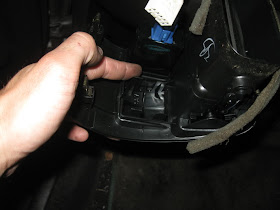I currently ran into an issue with my 1986 AE86. The alternators are set OEM specs to hold 60amps and have been an issue thruout the years of ownership and they can't keep you battery charged by mearely using your headlights, lead along AC, power windows, Sound systems with 500+ watts, etc.
And when you get the ones from local auto parts, they last short periods of time or fail within the first month or 2. ALso, there are nearly ZERO shops willing to modify your alternators affraid you will burn up your rides and then suit them for it.
Well, here's an idea that works for any pre-1990 Corolla GTS or FX16 fitted with 4AGE engines...
The 1984-87 alternators were 60AMPS
1988-89 alternators were 70AMPS
1990-91 alternators were 80AMPS
THEY ALL FIT EACH OTHER WITH NO MODIFICATIONS REQUIRED (may be except for the 4AGZE)...so, you can simply order the 1991 Corolla GTS alternator and there you have it!!
Can you see the ONLY Difference between the 2 pictures below? (Main post casing)
On your left is a 1991 Corolla GTS (4AGE engine) 80APMS Alternator...on your right a 1984-87 Corolla GTS (4AGE engine) 60APMS Alternator.


This may verywell be the same with other Rides that although their bodies/engines may have changed, their engines may still be using the same alternator housing/connections/brackets, but internally, they are capable of more AMPS and that will solve your issue with adding accessories to your rides and not affecting your charging system.
Do your own search on other rides and Good luck!



















































